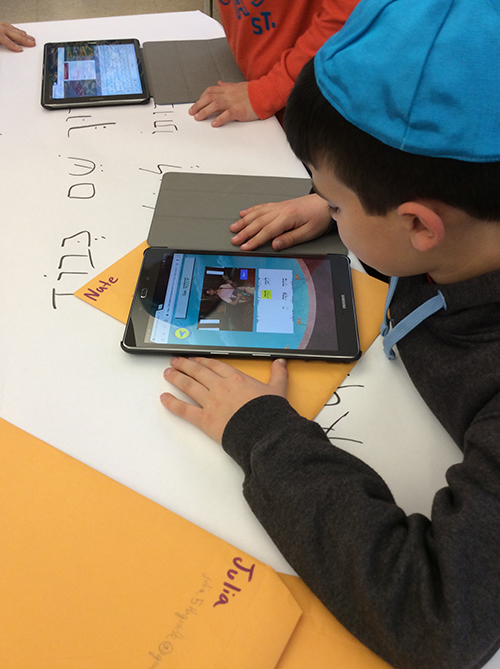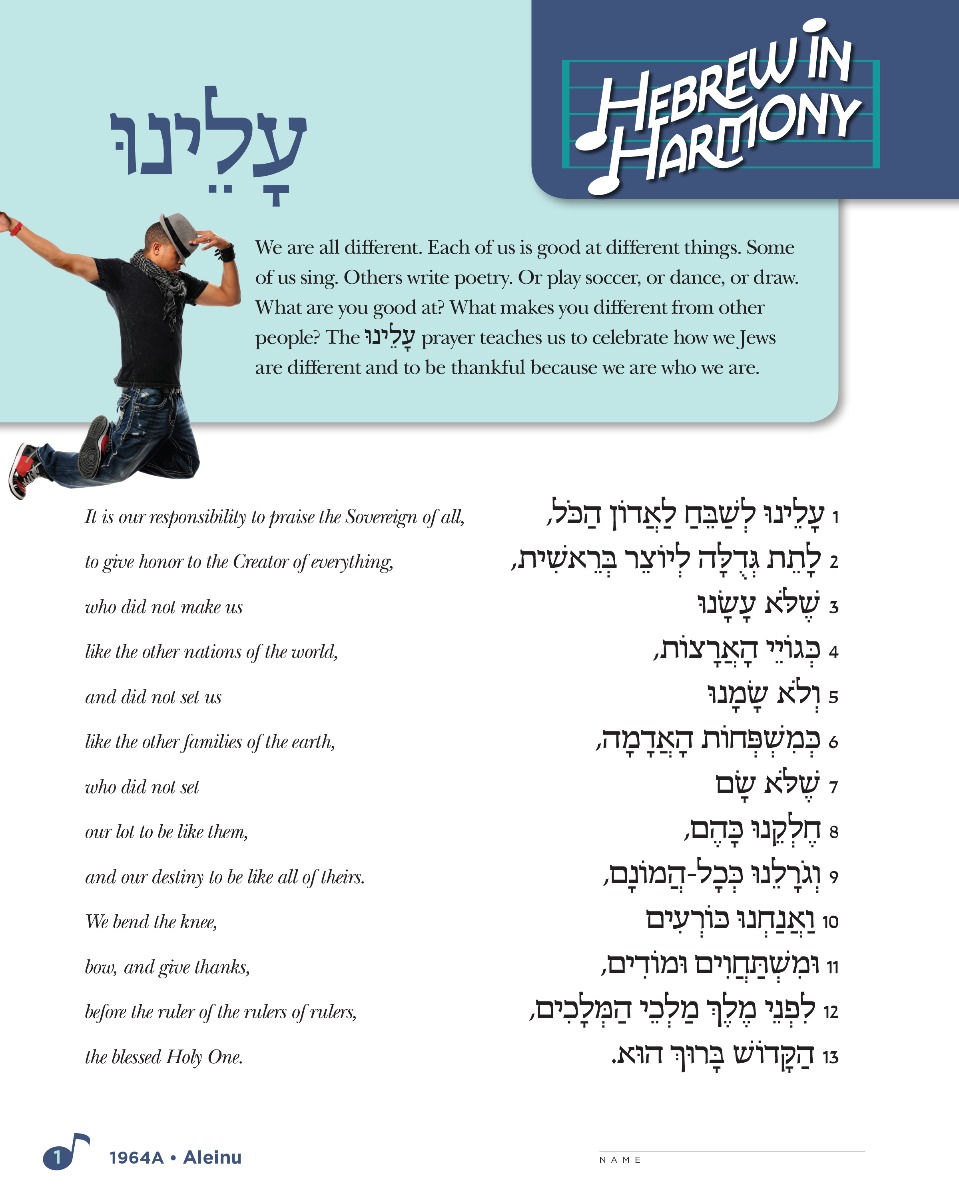Boost Reading Practice with Hebrew in Harmony

By Ellen Rank
Looking for ways to add more reading practice with Hebrew in Harmony? Start by identifying the strengths and challenges of each student, their learning goals, and how they learn best. Then, choose a variety of activities to keep the learning interesting and to meet the needs of different kinds of learners.
Throughout the year, provide a variety of ways and venues for students to practice prayer reading. Here’s a good tool: Kol Yisrael Funbook has kid-friendly reading activities (Reading Riddles, Self-Timed Games, Tic-Tac-Toe) for almost all the prayers in Hebrew in Harmony. Keep a set of Funbooks for kids to dip in and out of.

Remember that there are three essential sources of Hebrew reading practice in Hebrew in Harmony:
- 1. The complete prayers in every student journal.
- 2. Three “Hebrew Helpers” pages in every student journal.
- 3. Hebrew in Harmony app—the best way to practice, at home or at learning centers in class.
Practice in different kinds of groups
Below are suggestions for practicing reading in different groupings: individual, pair/chevruta, small group, and whole class.
Individual
Whenever possible, listen to individual students read the prayers. Ask them where they feel they need help. Given them your time and attention. Madrichim can also help by listening to individual students in a quiet part of the room or in another quiet, comfortable place.
Have students use the Hebrew in Harmony app to listen to prayers read aloud (with each word highlighted) and to read along and record themselves. The app is ideal to use at learning centers in the room while you listen to individuals read.
Pair/Chevruta
Pair students into chevruta based on their Hebrew level, assigning specific readings to each chevruta. Encourage students who have demonstrated that they can read a selection fluently and accurately to check their partner’s reading. Adapt and reuse “Hebrew Helper” activities for chevruta practice. For example, challenge chevruta to read all the words or those in a specific line in the activity fluently and accurately, correcting each other. Have them award each other stickers or give each other thumbs up.
Small Group
Give each group a small box or bag containing papers with the numbers 1 through the number of lines in the prayer in their journal. Each student in the group picks a number and reads aloud that line of the prayer. Others in the group listen to their classmate read and help as needed.
Whole Class
Games can be a good way to get everyone involved and reading. For example, as you introduce new prayer words, make copies of the black-line master Prayer Words found in each module of the Hebrew in Harmony Curriculum Core to create sets of flashcards. Divide the class into groups of 2-4 students and play Memory. Or post the flashcards on the board or write them on a flip chart and ask volunteers to draw the meaning of a Hebrew word of their choosing or to demonstrate the word by using movement or actions. The others must guess the Hebrew word.
Mix-and-match grouping
Take advantage of different kinds of grouping as you introduce a new prayer. For example:
- • Divide the class into small groups and assign chevruta partners within the group.
- • Give each student in the class an index card. Ask them to place the card below the first line of the new prayer in their journal and to move the card down as you read each new line.
- • Read the first one to four lines of a prayer aloud, depending on the difficulty, with students following along. Then have students chorally read the same lines. Remind students to move the index card below the line they are reading to help focus on the new words. Repeat this a few times.
- • Ask students to read the lines to themselves individually three times.
- • Direct students to read the lines with their chevruta.
- • Follow this with the whole class reading the lines chorally.
- • Then call on small groups to read the lines aloud.
Optional: Challenge groups to time themselves reading and to beat their own best time.
Assess regularly
Continue to assess students’ progress throughout the year using Hebrew Reading Assessment. Use the results to decide:
- - which aspects of decoding (for example, letter and vowel sounds, syllables, rhythmic reading) you need to review with individual students or the whole class.
- - the ability level of the children, especially if you plan to group them by Hebrew skill level.
Check that each student is gaining fluency and accuracy. Adjust student groupings and reading plans as students’ skills develop. Give parents specific feedback regarding their child’s Hebrew reading ability using these same assessments.
By routinely providing engaging reading practice designed to meet learners’ needs, you’ll help your students to gain fluency, accuracy, and confidence as they learn and master new prayers.
For more information about Hebrew in Harmonyor any of the materials described above, contact Joan Carr or Terry Kaye.

